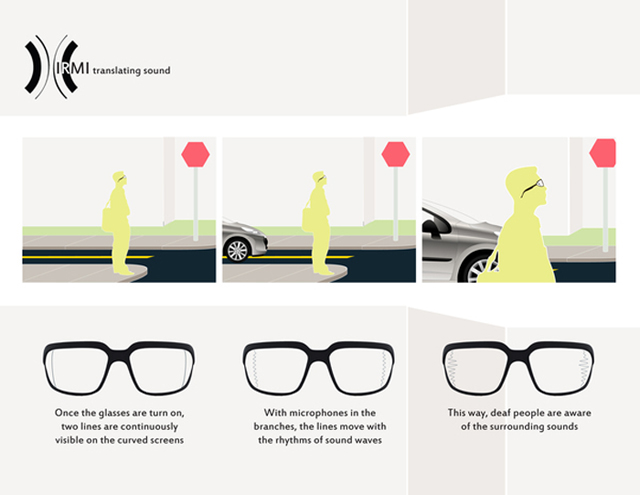With the announcement of Google Glass recently, there's been a growing drumbeat around heads-up displays. The latest focuses on people suffering from hearing loss. The Himri Glasses, created by Daniele Silvestri and co-owned by Andrea Chagnon, make sounds visible to users with hearing impairments. The glasses detect surrounding noises, analyze their amplitudes and volume and displays a graphic visualization of the sound on the sides of the lenses. Notifications alert wearers about approaching cars and wailing alarms to help avoid any accidents. What's nice about this design is that the aesthetics and styling is considered, making the solution more appealing to users to actually wear. Also, interactive heads-up displays should not be about replicating the phone experience onto eyewear lenses. Don't give me a bunch of UI that comes at me at all times! This concept is an example of how you can use the unique formfactor and body placement of glasses in a unique and useful way to solve a simple problem. Well done Silvestri.

More info and images at Industrial Design Served.




